The handpan or “hang” is a convex steel drum played with the hands and tuned with multiple notes. Each handpan is tuned to a particular scale such as major, natural minor, harmonic minor, hijaz, mixolydian, etc. Sonically the handpan is an overtone-emitting instrument that has the capacity to create many layers of sound and ethereal effects and works very well with drone instruments. Originally called the hang (pronounced “hah-ng”) the handpan was invented in 2001 by a little company in Switzerland. We’ll tell you why you should not call it a “hang drum” in a little bit, but first:
Origin of the Handpan/Hang
In the 1970s the Trinidad steel drum sparked a phenomenon throughout Europe. Felix Rohner had been playing the steel pans for twenty years and by the 1990s, he founded his own company, PanArt, for the creation of these concave instruments. Sabrina Scharer, who would become his long-term business partner, signed on to PanArt shortly after.
A Swiss jazz and steel pan musician, Reto Weber, traveled to India and approached PanArt looking for a way to play the steel drum with his hands, as he had done with the Indian ghatam (clay drum) asking, “Can you make a ghatam with notes?” The inspiration for the Hang and what was later to be called the Handpan was born.
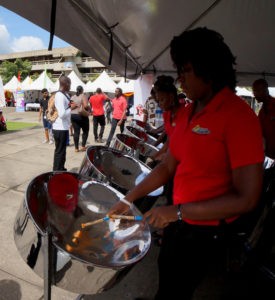
Felix and Sabrina revolutionized the Trinidad steel drum by flipping a custom hand-hammered metal pan from a concave to a convex position. Each of the seven to eight notes were then made profoundly sensitive to the lightest touch, allowing musicians to play the instrument by hand. The center note of the instrument, referred to as “the ding” bubbles out from the middle while the notes of the musical scale circling around the ding and up the sides of the pan are sunken into the metal as you would see with a traditional Trinidad steel pan, except with an additional dimple in the center of the note.
The tuned convex pan was then sealed together with a powerful adhesive and resonating chamber of thicker steel with an opening in the middle (called the “Gu” that can also be played percussively when the instrument is flipped upside down), creating an aesthetically mysterious UFO shape.
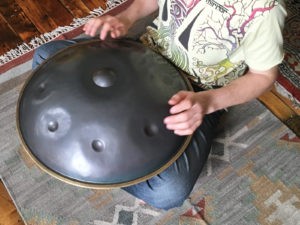
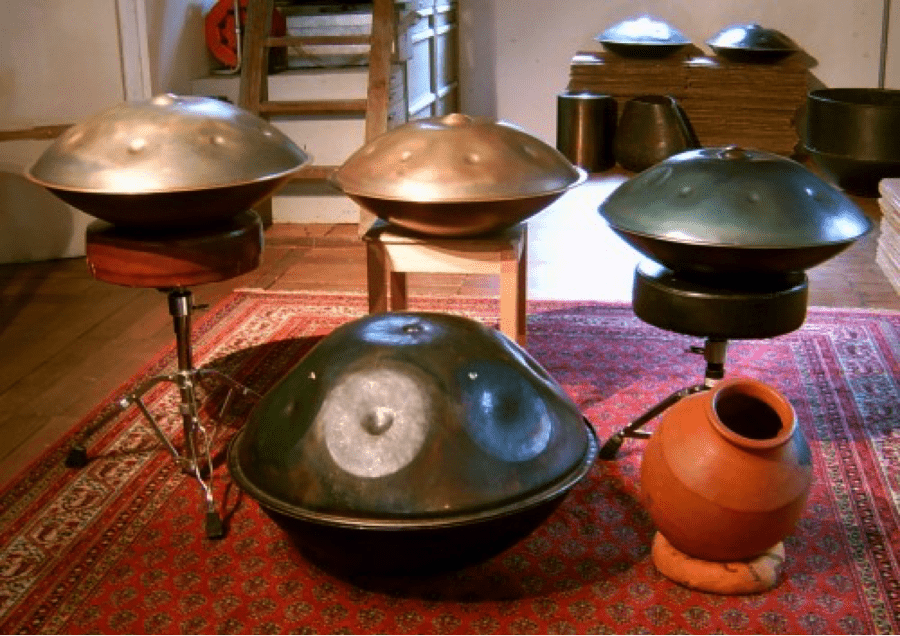
Felix and Sabrina introduced a policy where potential Hang customers had to submit a hand-written letter as to why they wanted to purchase the instrument to PanArt. Those who simply visited the PanArt workshop without invitation in Bern, Switzerland were sent home without welcome. PanArt stopped producing the instrument in 2013 to the dismay of thousands in order to preserve the mystique, value, and elusiveness of the instrument. Felix stated, “The Hang is not something to put in a shop window. It belongs to the flow of the gift. This is the idea we would like to be communicated.”
Instrument makers in Europe and the United States began to make their own version of the Hang beginning in 2007 but due to legality, the name “Hang” is limited only to instruments created by PanArt. Thus, the name “handpan” was born, which now refers to any type of “Hang” type steel pan created by a manufacturer other than PanArt.
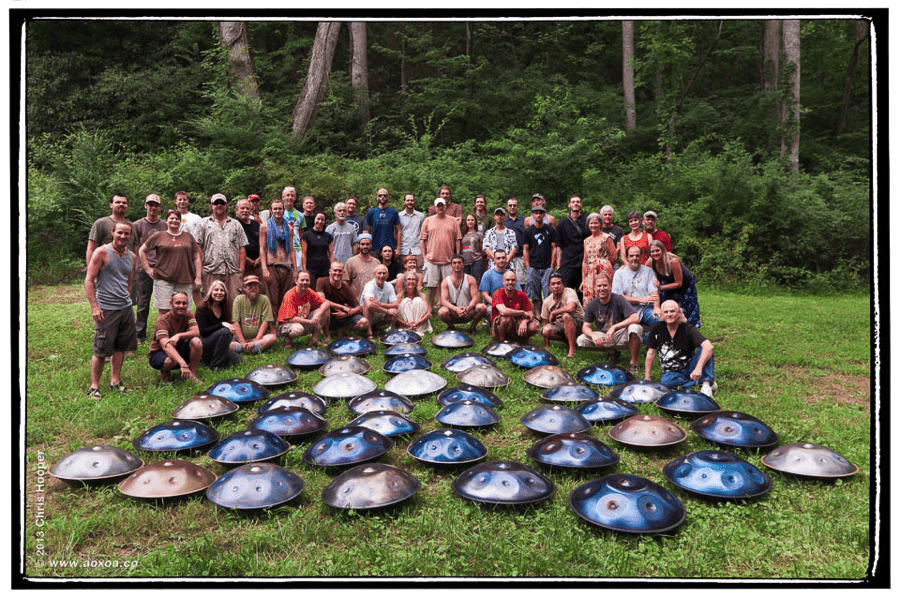
There are still very few handpan makers, roughly less than a hundred in the entire world, making the handpan still extraordinarily difficult to obtain and expensive in comparison to other instruments. Top line makers have waiting lists that can have orders pushed back for years due to the high demand and complexity of making the instrument. However, flash sales occasionally occur on the sites of various makers and second-hand resale of handpans is common.
So why not call it a Hang Drum?
The original makers insist that the title of the instrument be Hang for their brand of hand pan. While the term Hang Drum is commonly used verbally, in writing it is most proper to refer to instruments made by the company Pan Art as simply “hang” and all others as “hand pans”.
Handpan compared to RAV Vast (a beautiful sounding metal tongue drum):
PanArt and Hang documentary:
Handpan v. Hang comparison video:


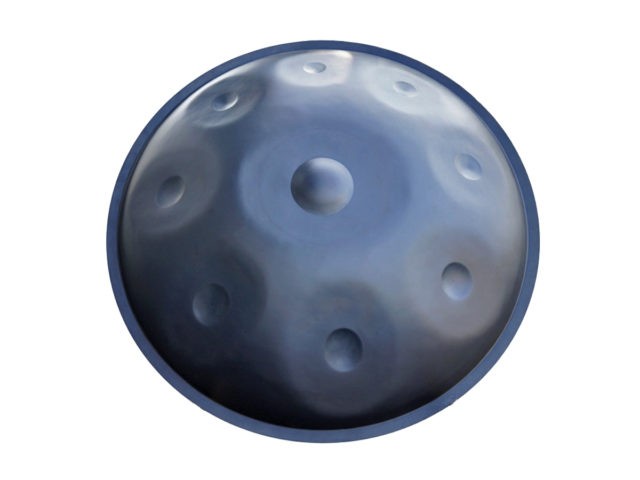
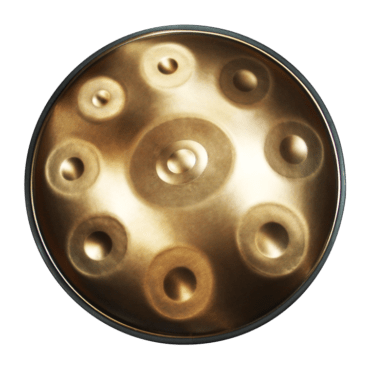
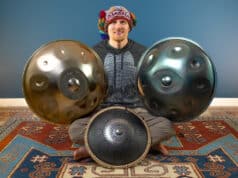
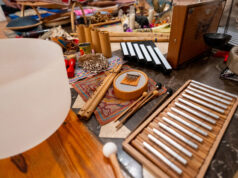









Have you ever heard a kalimba song done by Taj Mahal on his Recycling The Blues album. Id like to see if you know the tuning. Seems Ive heard similar tunings on your site
I think you mean to say What is a Hang (and why they don’t want you to call it a Drum) Panart the creators of the Hang do not recognize “handpan”
Hey Miko, Thanks for your post. I would love for you to share more on this topic. Do you think you can write a reply that is more educational for people? This would be useful for our audience and I’d be happy to publish it -AJ
I wonder if these could be made with medevil level technology. The sound made by one I saw in a video once is precisely the sound I’d want for the culture of a fantasy world I’m working on. Now my world does have magic, so there’s SOME leyway there, but not much. In order to use magic to make things, you have to understand how things work without it. Otherwise, bad things tend to happen.
Wow. I want one!! I’m a violinist and have been interested in expanding my repertoire. Quite simply, the handpan has the most beautiful sounds I’ve ever heard.
* hang… handpan? Not sure which way to go with it. I respect their branding of it, and I’d want an authentic Hang.
Why limit yourself in this way? You can’t even get a Hang retuned by PanArt – by now, any Hang that is in tune is so only by the mercy of the (now over 150) other handpan makers in the world. How “authentic” is that?
As with any instrument, the quality (and price) of handpans varies – but in my opinion, the best makers have surpassed the Hang in any aspect you choose to name. The Hang will always have been the first historically, but that’s more of interest to a collector or museum more than to a performing artist. The evolution of this instrument is unstoppable, and a lot has happened since PanArt chose to withdraw from it years ago.
I think they could. Although most handpan makers do use modern technology, in principle you only need hammers, fire, cutters, glue, and mountains of skill, experience and patience to go from a carbon steel sheet to a handpan. The sheet could perhaps be created with medieval armour-making technology.
Cheers, lino
(handpan tuner maker)
@Jerry stumbled across this looking for a brief intro to handpans. Very balanced and well written, thanks!
PS the above is a reply @Forest Wells, something went wrong in the posting.